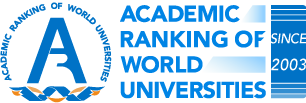Selection of Universities
ARWU considers every university that has any Nobel Laureates, Fields Medalists, Highly Cited Researchers, or papers published in Nature or Science. In addition, universities with significant amount of papers indexed by Science Citation Index-Expanded (SCIE) and Social Science Citation Index (SSCI) are also included. In total, more than 1000 universities are actually ranked and the best 500 are published on the web.
Ranking Criteria and Weights
Universities are ranked by several indicators of academic or research performance, including alumni and staff winning Nobel Prizes and Fields Medals, highly cited researchers, papers published in Nature and Science, papers indexed in major citation indices, and the per capita academic performance of an institution. For each indicator, the highest scoring institution is assigned a score of 100, and other institutions are calculated as a percentage of the top score. The distribution of data for each indicator is examined for any significant distorting effect; standard statistical techniques are used to adjust the indicator if necessary. Scores for each indicator are weighted as shown below to arrive at a final overall score for an institution. The highest scoring institution is assigned a score of 100, and other institutions are calculated as a percentage of the top score. An institution's rank reflects the number of institutions that sit above it.
Indicators and Weights for ARWU
| Criteria |
Indicator |
Code |
Weight |
| Quality of Education |
Alumni of an institution winning Nobel Prizes and Fields Medals |
Alumni |
10% |
| Quality of Faculty |
Staff of an institution winning Nobel Prizes and Fields Medals |
Award |
20% |
| Highly cited researchers in 21 broad subject categories |
HiCi |
20% |
| Research Output |
Papers published in Nature and Science* |
N&S |
20% |
| Papers indexed in Science Citation Index-expanded and Social Science Citation Index |
PUB |
20% |
| Per Capita Performance |
Per capita academic performance of an institution |
PCP |
10% |
| Total |
|
|
100% |
| * For institutions specialized in humanities and social sciences such as London School of Economics, N&S is not considered, and the weight of N&S is relocated to other indicators. |
Definition of Indicators
| Indicator |
Definition |
| Alumni |
The total number of the alumni of an institution winning Nobel Prizes and Fields Medals. Alumni are defined as those who obtain bachelor's, master's or doctoral degrees from the institution. Different weights are set according to the periods of obtaining degrees. The weight is 100% for alumni obtaining degrees in 2001-2010, 90% for alumni obtaining degrees in 1991-2000, 80% for alumni obtaining degrees in 1981-1990, and so on, and finally 10% for alumni obtaining degrees in 1911-1920. If a person obtains more than one degrees from an institution, the institution is considered once only. |
| Award |
The total number of the staff of an institution winning Nobel Prizes in Physics, Chemistry, Medicine and Economics and Fields Medal in Mathematics. Staff is defined as those who work at an institution at the time of winning the prize. Different weights are set according to the periods of winning the prizes. The weight is 100% for winners after 2011, 90% for winners in 2001-2010, 80% for winners in 1991-2000, 70% for winners in 1981-1990, and so on, and finally 10% for winners in 1921-1930. If a winner is affiliated with more than one institution, each institution is assigned the reciprocal of the number of institutions. For Nobel prizes, if a prize is shared by more than one person, weights are set for winners according to their proportion of the prize. |
| HiCi |
The number of Highly Cited Researchers in 21 subject categories. These individuals are the most cited within each category. If a Highly Cited Researcher has two or more affiliations, he/she was asked to estimate his/her weights (or number of weeks) for each affiliation. More than 2/3 of those multi-affiliated Highly Cited Researchers provided such estimations and their affiliations receive the weights accordingly. For those who did not answer, their first affiliation is given a weight of 84% (average weight of the first affiliations for those who replied) and the rest affiliations share the remaining 16% equally.
|
| N&S |
The number of papers published in Nature and Science between 2008 and 2012. To distinguish the order of author affiliation, a weight of 100% is assigned for corresponding author affiliation, 50% for first author affiliation (second author affiliation if the first author affiliation is the same as corresponding author affiliation), 25% for the next author affiliation, and 10% for other author affiliations. Only publications of 'Article' and 'Proceedings Paper' types are considered. |
| PUB |
Total number of papers indexed in Science Citation Index-Expanded and Social Science Citation Index in 2012. Only publications of 'Article' and 'Proceedings Paper' types are considered. When calculating the total number of papers of an institution, a special weight of two was introduced for papers indexed in Social Science Citation Index.
|
| PCP |
The weighted scores of the above five indicators divided by the number of full-time equivalent academic staff. If the number of academic staff for institutions of a country cannot be obtained, the weighted scores of the above five indicators is used. For ARWU 2013, the numbers of full-time equivalent academic staff are obtained for institutions in USA, UK, France, Canada, Japan, Italy, China, Australia, Netherlands, Sweden, Switzerland, Belgium, South Korea, Czech, Slovenia, New Zealand etc. |
Data Sources
